Jerusalem Jackson Greer's Blog, page 2
June 9, 2023
Opening the Window (Or how Grown-up sleepovers might just heal the world.)
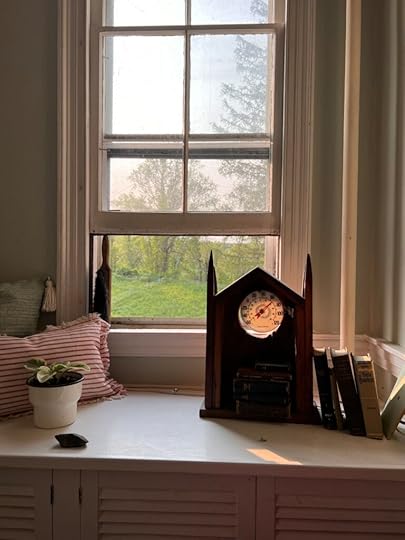
Recently my therapist introduced me to a nervous-system regulating concept called the Window of Tolerance. As I understand it, Window of Tolerance is very similar to what I call “margin” and what some folk call “emotional bandwidth.”
It is a way to talk about our capacity for regulating our nervous system and our responses to stress, trauma and trauma triggers, and to being overwhelmed.
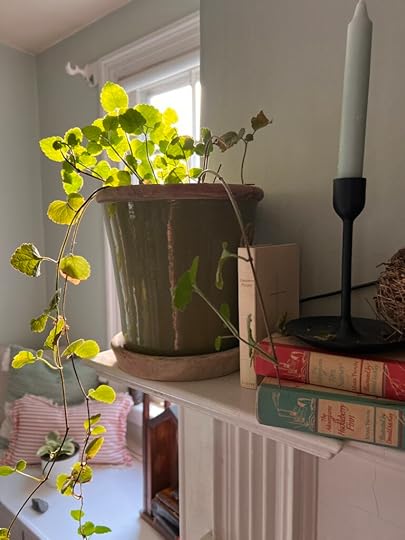
In the past five months, my window has been cracked only a very tiny amount. I started graduate school/seminary in January, made two international trips within two months of each other, traveled more than I have since early 2020, and have been managing a very large work (ahem, gargantuan) project.
Oh, and I hit the “it’s-been-6-months-since-we-up-ended-our-life-to-move-to-New-Jersey-and-it’s-harder-than-I-thought-it-would-be” wall and entered peri-menopause.
So, yeah. My window was barely cracked, let alone open, and for months I did my damndest not to turn into a puddle of hot lava and leak out onto everyone around me.
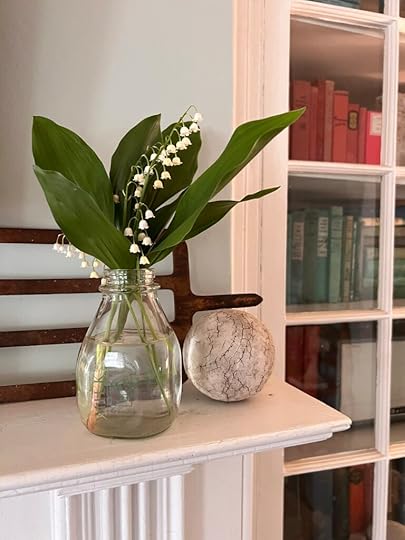
But then, somehow, right when I thought I might actually break into a hundred tiny twitching pieces of anxiety and dread, I finished my first semester of school. And suddently whole room in my brain opened back up, and my window inched open a bit more.
A few days later, I travelled to Arkansas, where I went on a grand tour visiting so many of my very favorite people—the people who know me and see me and love me, heart and soul. As I am. For who I am.
And I didn’t just get to see these people. I got to have sleepovers.
Y’all. Sleepovers as an adult are my favorite thing. I think that is part of why I am drawn to the idea of having a retreat house, or why I have always dreamed of having a sort of shared land commune (with my favorite people of course.)
Of all my living arrangements during college, my favorite was the communal dorm. (Shout out to everyone in Perrin West @ OBU ’93-’94! )
That year – and that dorm – was special. We kept our doors open. We padded down to the communal bathroom in our robes, towel hair wraps, and fuzzy slippers, toting our shower caddies filled with Bath and Body Work products (Plumeria anyone?)
In those days, we moved seamlessly from room to room, sharing notes from class, swapping clothes, and consoling each other as we slowly, but steadily, broke up with our high school sweethearts. They were halcyonist of all the halcyon days. And getting to guest-room hop during my trip felt a lot like those days.
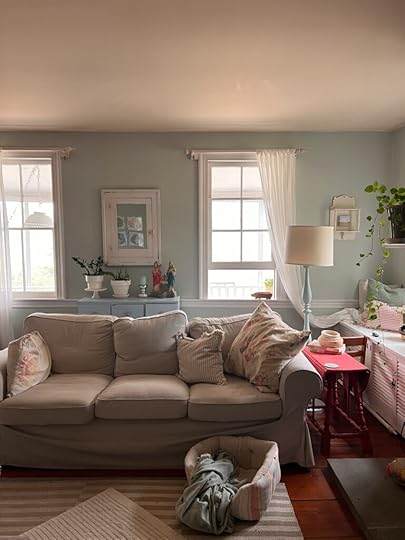
Here is the thing – and it’s why I think group Airbnb’s are a huge hit, (and why summer camp is such a special time for kids)- there is a different level of friendship intimacy that happens when you see each other with bedhead, when you stay up until you are too tired to pretend to be fine (instead of going to your own hotel room at a sensible hour,) and when you all do the dishes together and everyone figures out who needs to wash and who is better off drying (because maybe they just don’t quite scrub hard enough, because they got distracted talking about Queen Charlotte…).
When you cohabitate with folks, when you share bathrooms and thermostats – even for just a day or two – you cross some sort of time/space continuum that invites a different kind of knowing. A knowing that changes your whole being on some kind of cellular level. A knowing that affirms that you are loved and seen and accepted as you are – bedhead and all. It is the kind of knowing that opens our windows of tolerance – for our own imperfections and self-inflicted chaos, and for the imperfections and chaos of others – a little bit wider. It is the kind of knowing that produces gentleness and kindness, patience and self-control. It is the kind of knowing that is rooted in very source of Love itself.
My trip to Arkansas was a whole week of this kind of knowing, and it healed me in places I didn’t even realize where wounded.
When I got off the plane in Little Rock, my window was opened just a smidge more than cracked, but by the time I boarded my return flight, it was wide open again, with perfect summer breezes blowing gentle through. And it was all because I had seen and been seen, I had known and been known, and I had loved and been loved. Bedhead and all.

July 25, 2022
Preservation Acres: Mudroom
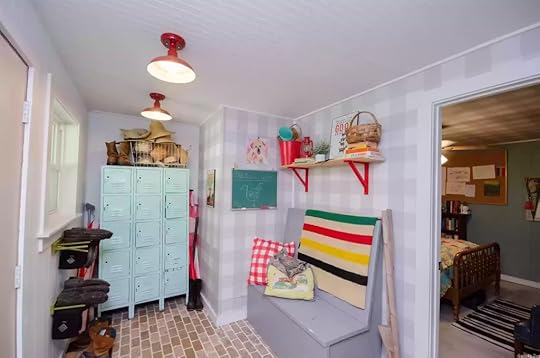 The Mudroom Finished
The Mudroom FinishedWell, we have begun our second week at the new farm, and while there will be MANY stories to tell and pictures to share, I am not entirely done telling the story of Preservation Acres and all we did there on this blog. So today, I am posting about our mudroom transformation.
When we moved to PA in the fall of 2014, this room – and the adjoining bedroom, was one long space. We suspect it was a carport that had been closed in at some point in the 80’s, as one wall was made clad in exterior siding, while the other walls had old-school paneling. You can see the two types of paneling below in the photo on the far right. Also, the floor was just a solid concrete slap. Similar to what you might park a car on…
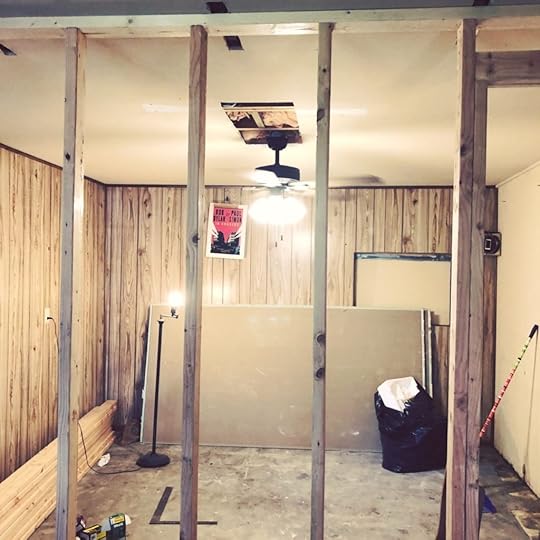
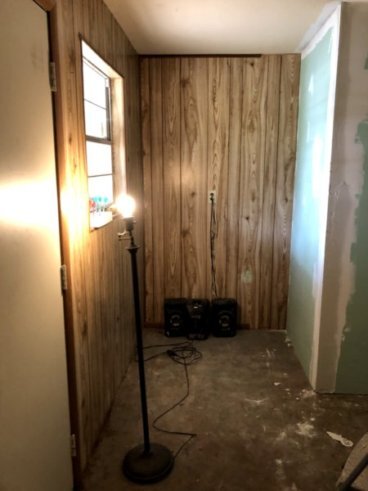
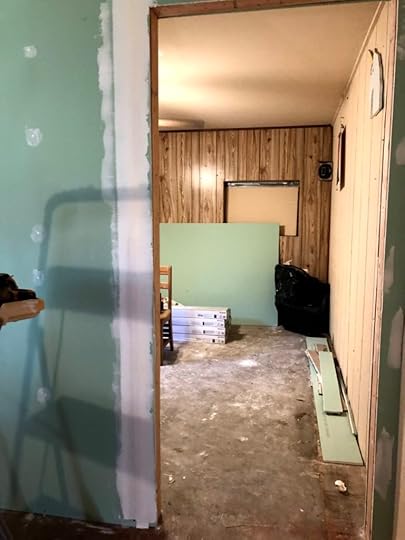 Some mid-process photos
Some mid-process photosWhen we decided to split this space into two, the first thing that Nathan did was install a new overhead light and fan (so he could see) in the bedroom, and then, with the boys help, he built the dividing wall, which included space for a closet in the bedroom; this is what created the nook that the gray bench would eventually go into. (You can see the beautiful floor in these pics.)
 My inspiration board
My inspiration boardMeanwhile, I was creating inspiration boards for the two rooms. This was what I came up with for the mudroom. I wanted it to fit Preservation Acres’s colorful but light and airy “state fair meets schoolhouse” vibe. Of course, as always, I was working on a thrift store budget, so I scoured FB Marketplace, local flea markets, and online sales to find all the bits and pieces.
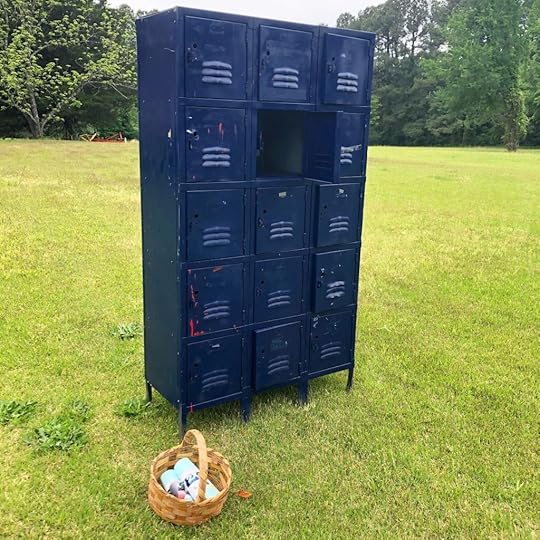 The Lockers Before – dark navy.
The Lockers Before – dark navy.One of my first finds was these lockers. I think I paid $50 dollars for them, plus several cans of spray paint. They were a little roughed up, but for a mudroom, I thought they were perfect.
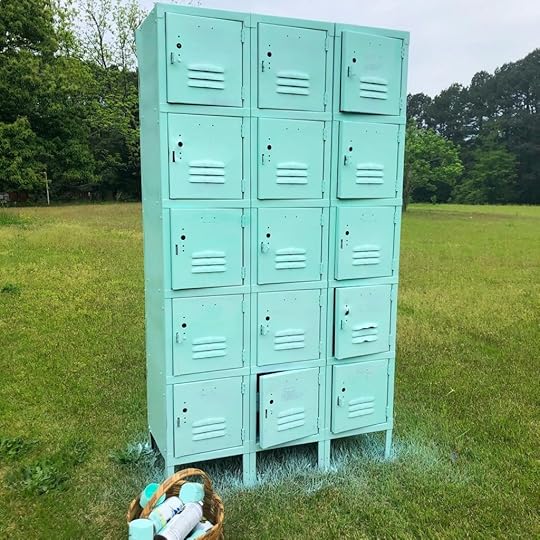 The Lockers Mid-Transformation – blue mint.
The Lockers Mid-Transformation – blue mint.I planned to eventually add leather pulls to the doors (a la my inspiration pic), but that never happened. And while the lockers sadly did not make the trip to New Jersey, they did find a wonderful home in another mudroom, where maybe they can still get some new pulls.
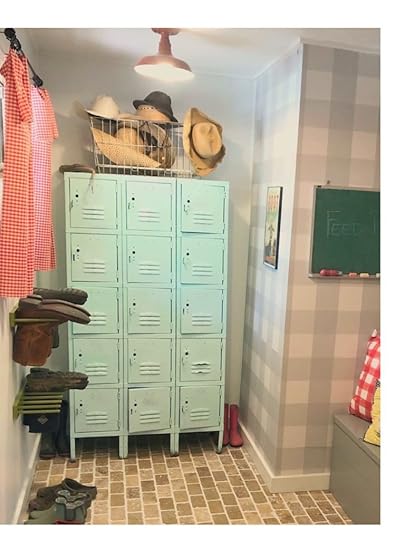 Lockers in the mudroom, “brick” floors.
Lockers in the mudroom, “brick” floors.My original plan was to lay brick floors here, but do you know how expensive brick is? So instead, we went with a tile (that we got a great deal on from Floor & Decor) in about the same shape and laid it in a running bond pattern- spacing them out just like a brick floor would be and giving them a little extra patina by wiping some of the grout over the top.
The boot racks came from Etsy unfinished and painted them green. They didn’t hold up as well as I would have liked, so if we do this again in our new mudroom, I will go with a different maker.
The light fixtures came from Amazon and were extremely well priced, – we liked them so much we put them in the hallway upstairs too. They were white to begin with, but my unofficial god-daughter Phoebe painted them a high-gloss red for me and saved me beaucoup pennies.
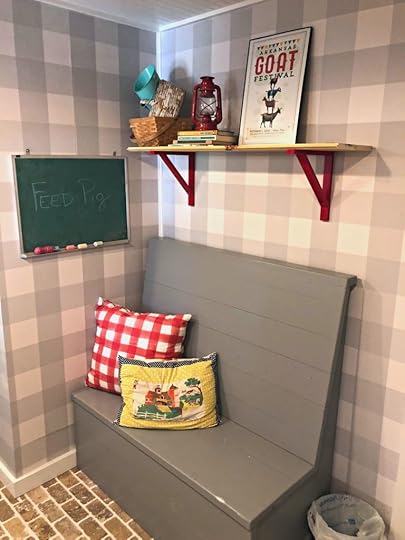 Bench and Large Buffalo Plaid Wallpaper
Bench and Large Buffalo Plaid WallpaperHalf of the walls (and the beadboard ceiling) we painted Country White from Wal-Mart (my go-to white for almost everything). The rest, we paper with removable wallpaper in a large gray and white buffalo check. I think I got it from Home Depot online. (I still love that wallpaper and brought a leftover roll with me to NG, where I think it might find a home over our fireplace in the living room…)
The bench was another FB Marketplace finds; the shelves were made from a leftover piece of flooring and some unfinished brackets I painted to match the light fixtures. And the farm pillow was a sweet gift from one of my oldest blog friends, Sarah.
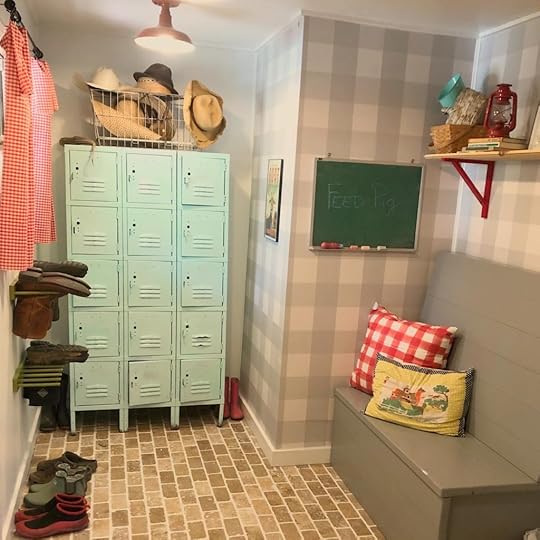
I just love how this little space turned out. It was the Little Mudroom that Could.
And you will eventually (hopefully) see several smaller pieces from this room in the cabin here at the new farm, where most of my red and camp-like items go to live. And yes, I am already keeping my eyes open for some new lockers over there ;).
Thank you dear mudroom for giving us a lovely place to store our muddy boots, egg baskets, and ALL the gloves. You held it all together for us, no matter how busy or messy we were.
xo

June 28, 2022
Moving is hard
Moving is hard. Moving after 30 years in a place is probably even harder. I don’t know for as sure, as this is my first time making such a move, but it feels harder. And more emotional. Which might be the 30-year thing, or it might be the peri-menopause. Who can say?
As a child, I moved a lot. I think one time I counted 12 places that my family had lived in 12 years. Looking back, I realized that I was being adolescent-dramatic when I came up with that number. I think two of those places were brief resting places between houses. So the true number was 10. 10 places by 12 years old.
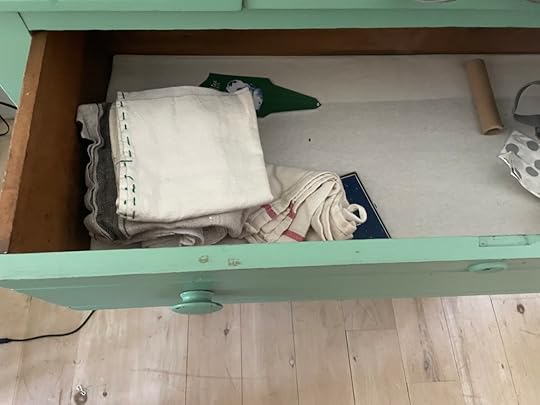
Here is the count as I remember it now: New Jersey – 1 location, Arkansas – 4 locations, Tennessee – 1 location, Arkansas again – 2 locations, Florida – 1 location, and Alaska – 1 location.
Since moving to Arkansas in 1997 to attend college, I have lived in 4 dorm rooms, 3 apartments, and 4 houses. All within a 2-hour radius of each other. So moving 18 hours away is a bit of a jump. And, while parts of this process feel very familiar, figuring out how to move a whole life across the country is all new territory.
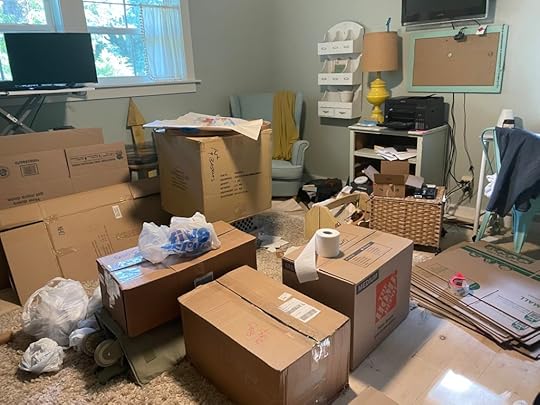
Is it midlife-dramatic to say that I feel a little bit like we are living Matthew 19:29, leaving our house, brothers, sisters, father, mothers, and fields to follow a wild Holy Spirit-led adventure?
There is the emotional aspect – leaving behind most of our family, our oldest friends, all our hopes and dreams for Preservation Acres, our church, and our history in this place. Where we are going there are no landmarks from our first 25 years of marriage and child rearing. No longer will we casually drive past places where we had our first date, got married, watched Wylie perform in his first play, heard Miles play the first notes on his saxophone, or were confirmed as Episcopalians.
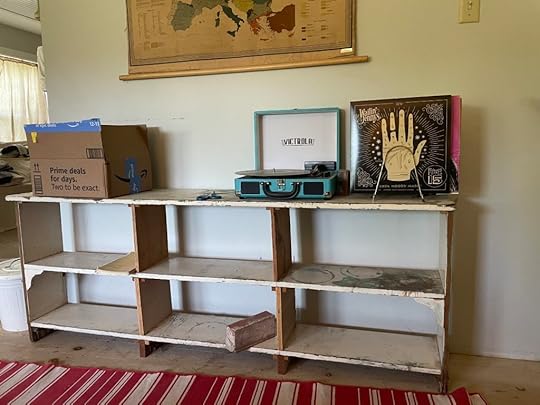
And there are the practical aspects – finding new doctors and car mechanics, setting up residency in a new state, learning the routes to a new church and the grocery store, and discovering our favorite new coffee shops and flea markets. Changing our address and eventually our payment info on just about everything.
And finally, there is the physical aspect – the packing – not just the house, but also our barn, the rehoming of some of our critters and the transportation of others, deciding what to take, what to leave, what to sell, what to give away. Deciding how to best get a tractor and all its implements across the country without breaking our vehicles or the bank. There is the coordinating of who is leaving when and how, and where we all stay over during the two-day journey.
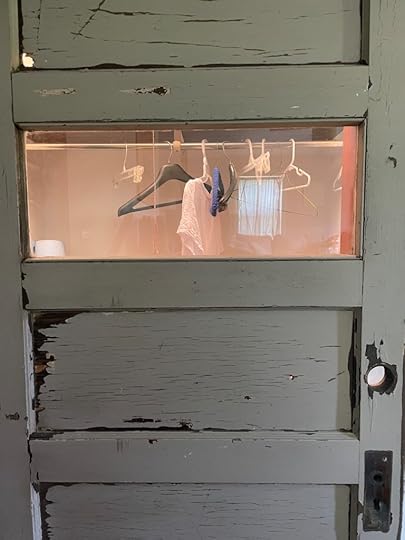
And finally, there is the desire to just Get There Already.
Since we have been to the NJ farm several times over the past nine months and spent a week recently, we are already invested and attached to the Place. The house, the land, the outbuildings, the trees, the pool, and perhaps most of all – the future there. We have been talking, praying, and dreaming about this move for nine months. We are ready to birth this baby.
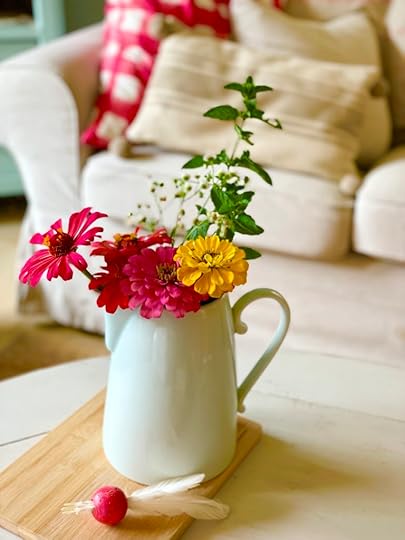
But there is still so much living to be done here. Grass that has to be mowed, meals to be cooked, friends to meet for dinner, nephews’ birthdays to celebrate. We still have bills to pay, toilets to clean, animals to be fed, berries to gather, and flowers to pick. We are, for a few more weeks, still in this place, on this land, in this house. And so, I doing my best to be present to here and now by practicing the spiritual discipline of Noticing. Noticing things like the way the light filters in through the linen shades in the kitchen and spills over the table that we made during the early days of the pandemic. I try and notice the way the Mother Tree’s branches, so heavy and full with her summer growth, bend and wave slowly in the breeze, changing the shadows on the lawn. I try and notice the creaks of our wood floors as I walk over them at night to get a snack. I try and notice all the things that I that right now seem so daily, but soon will just be a memory.
June 16, 2022
Preservation Acres: Primary Bathroom Remodel
“Love is particular: we name this person and love them. We invest in this place, in this soil and watch things grow.” – Leonard Hjalmarson
As we get ready to move and start our new adventure I wanted to take some time to record some of the projects and events missed here on the blog. This blog has been around so long and has already borne witness to so many changes in our lives, that it seems a shame to just leave Preservation Acres without properly documenting things. I want to make sure that years from now, when we are telling the story of how we got from point A to point T (or wherever we are), that the journey of this place and how it changed us and how we changed is not forgotten.
So, let’s begin filling in some gaps. First up, our primary bathroom remodel:
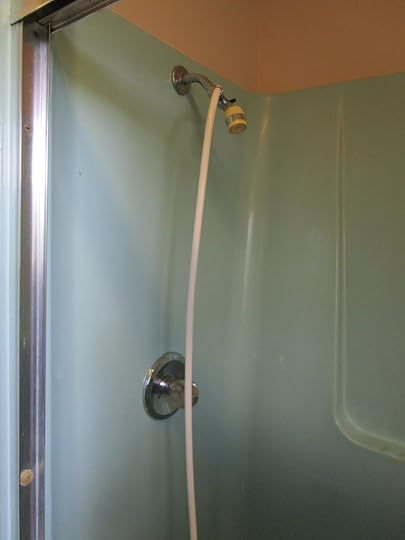
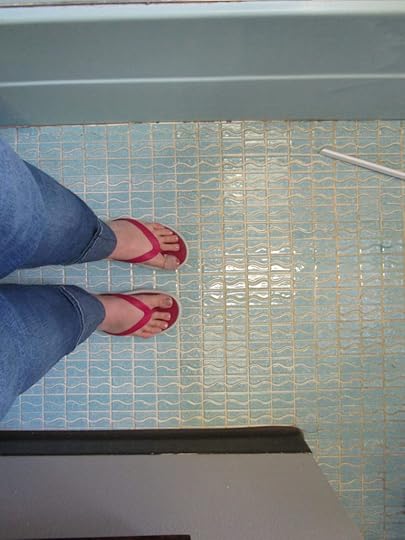
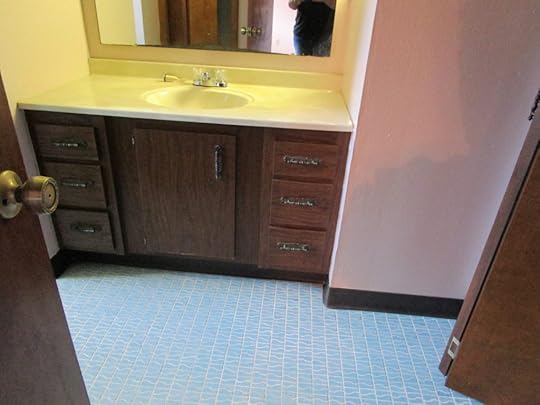 Primary Bathroom Before
Primary Bathroom BeforeWhen we moved into this house in 2014 this is what our bathroom looked like. Full-on 1971. But even though I didn’t love most of the features, I did love those floors.
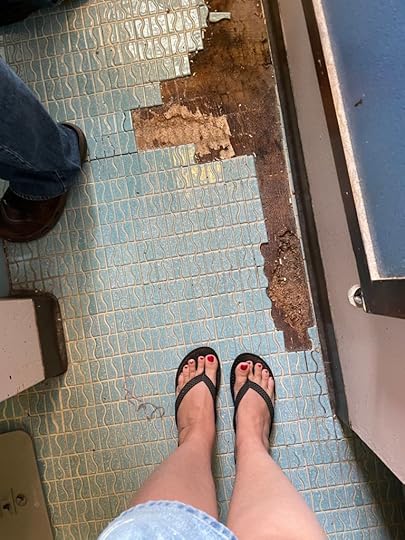
Unfortunately, fate had other plans. Due to two toilets that were not installed properly (one in each of the back-to-back bathrooms), the subfloor and sub-subfloor (don’t ask) were destroyed. So when it came time to renovate, we had to take things back to the studs – and replace some of them too!
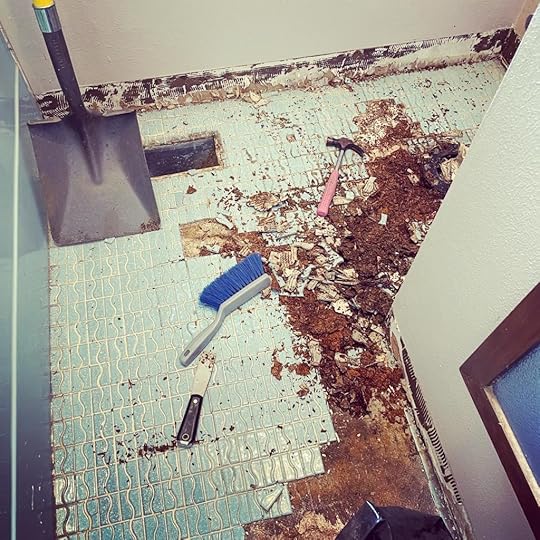
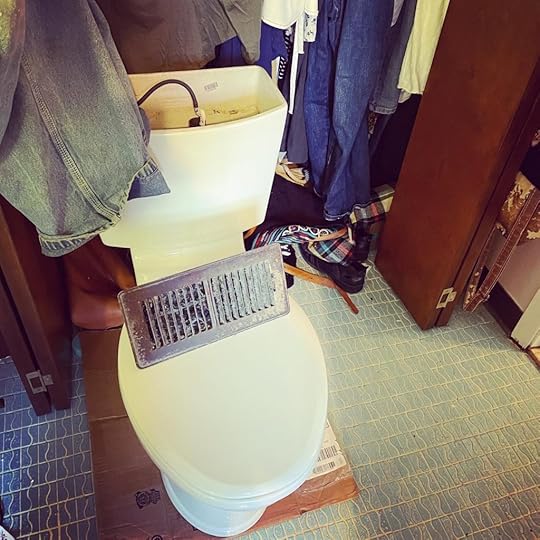 Taking this floor up took the longest out of all the phases.
Taking this floor up took the longest out of all the phases. Inspiration Board
Inspiration BoardI looked high and low for a tile that gives me the same happy vibe as the original one and finally found this one from Floor & Decor in Memphis. It isn’t as blue in person as in the picture, but I love it all the same. I feel like it suits this mid-century farmhouse so perfectly.
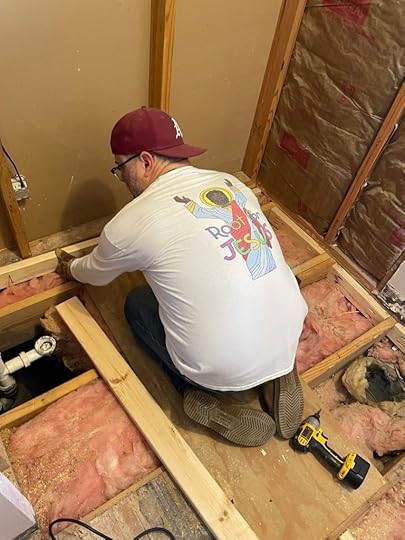 Installing new subfloor
Installing new subfloor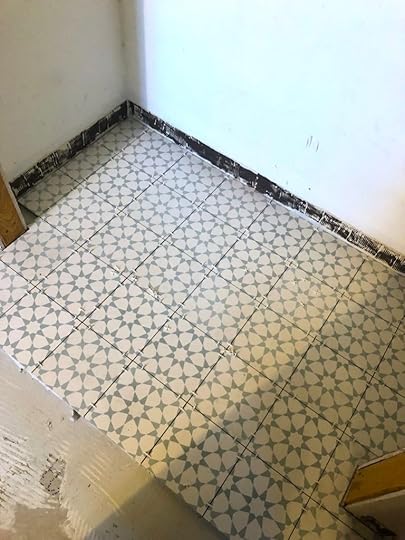 Floor tiles going down. I just love these tiles.
Floor tiles going down. I just love these tiles.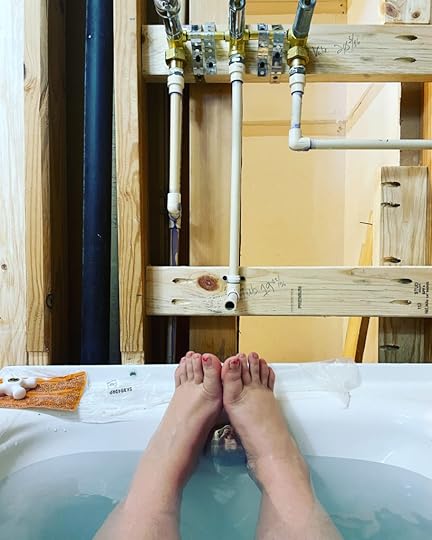 Desperate times call for desperate measures.
Desperate times call for desperate measures.Another absolute for this remodel was a soaking tub. Since we needed to stay with the existing bathroom footprint, I needed to find one that could do double duty as a shower, but I also wanted something that had a timeless feel and wasn’t too modern or builder-boxy. I was so excited to find this one with the curved front apron. It reminds me of an old cast iron tub from the 1950′.s
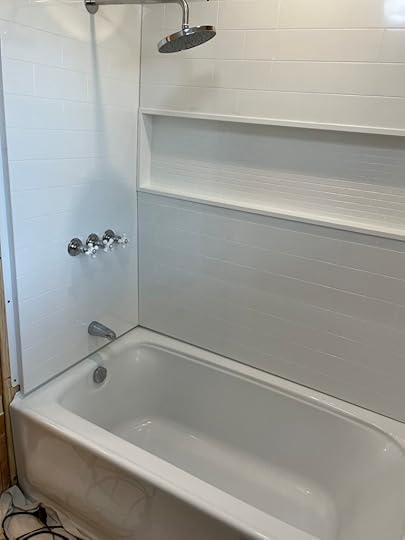 Surround is up at last! And that tub is a deep soaker with a dedicated water heater.[image error]Finished project. So lovely.
Surround is up at last! And that tub is a deep soaker with a dedicated water heater.[image error]Finished project. So lovely.For all the other finishes, we kept things white and bright with some pops of happy color and natural wood. The sink cabinet base is Ikea, but I switched out the knobs for a more custom look.
 I am obsessed with those faucets.
I am obsessed with those faucets.This house doesn’t really like fine finishes, so we stuck with a butcher block countertop and lined the nooks with bead board. I adore how it all came together, and I am so grateful that I have been able to enjoy it for a few months!
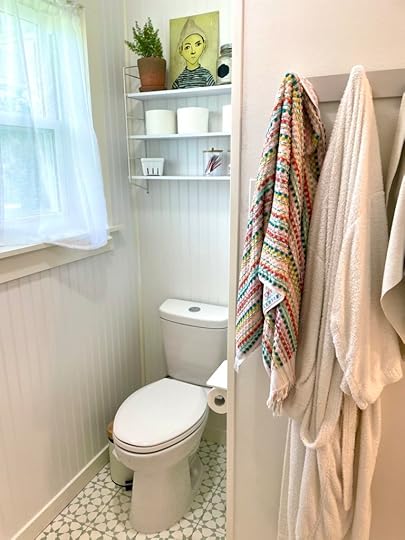 The cutest potty nook ever.
The cutest potty nook ever.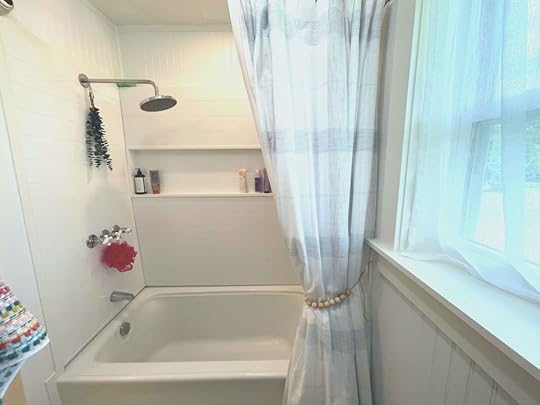 Oh, that tub. I will miss it. (Until I figure out how to put one in at the new farm!)
Oh, that tub. I will miss it. (Until I figure out how to put one in at the new farm!)Sources: Bathtub (my spurge item), Surround, Bath Faucets, Sinks, Sink Faucets, Floor Tile, Cabinet Base, Cabinet Top, Medicine Cabinets (I bought one online and one from FB Marketplace,) Shelf over the toilet, Towels, Lights over sink (discontinued), Cabinet knobs, Light near tub (I painted the base), Peg racks (Target Dollar Spot two years ago), Shower Curtain.
June 8, 2022
For our next adventure…
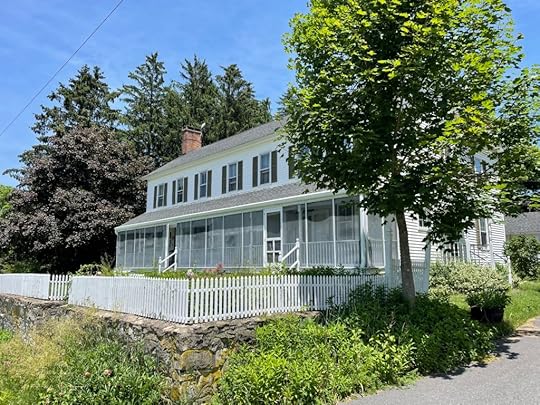
If you follow me on Facebook or Instagram, you might have seen that we are selling our beloved Preservation Acres and heading off for a new adventure. A new adventure that we are over the moon to tell you about.
But first, a little back story for those new to our story.
About 16 years ago, with help from the Holy Spirit via Phyllis Tickle and her Farm in Lucy series, Nathan and I began to discern a call to the land. We began to hear a call to a new family vocation—one that was rooted in community and creation and great intentionality. A call to a different way of moving and being in the world, to a deeper and sometimes slower way of living life – for ourselves, our family, and my ministry.
In 2015, I wrote a book about this call and our experience pursuing it. I wrote about all the things that went wrong at first (broken foot, chicken massacre, dead dog…), and I wrote about how help came in the form of St. Benedict and the words of Jeremiah 29:4-14. Scaffolding was built through Benedict and Jeremiah that would help us live into this call no matter our location. We learned to water the grass under our feet instead of waiting for greener pastures “someday.” We learned how to open our hands to what was instead of always pining for what could be.
And then, as these often go, things changed. I was called to be the Minister of Children, Youth, and Families at St. Peter’s in Conway. A call that meant moving to a more rural county in Arkansas. And so, after months of looking, and with God’s help, we purchased Preservation Acres – almost 8 acres, fitted with a pond, a barn/shop, lots of room for gardens, and a solid house ready for fixing up.
We signed the papers, jumped in, and set about making it our own, changing the house, renewing the land, raising chickens, a pig, some goats, and our boys. We wanted to create a place that nourished us and others in our community – a place for gathering and growing. A place for liturgical shenanigans and crowded tables and digging in the dirt. It was a place where people could feel loved upon this earth, just as they were.
Some of what we had prayed for and dreamed about came to pass – we got to hold multiple Agri-liturgical events for our St. Peter’s community. We started the ultimate not-so-small Small Group and found a deep community; we hosted weddings and birthday parties, farm-to-soul eucharist, fireworks over our pond, and Ascension Day kite flying. We planted 3000 sq feet of gardens and huge pumpkin patches. We fished in the pond, ate wild berries, gave away more eggs than we could eat, and celebrated our boy’s high school (and one college) graduations. And Preservation Acres is where the seeds of Good News Gardens first began to sprout in late spring of 2020, as a global pandemic and racial violence changed our lives forever, reminding us that our call to love our neighbor is often a matter of life and death.
It has been an incredible, God-filled, hardworking, sweat-and-tears seven years here at Preservation acres.
And.
Not all of our dreams were realized.
First, PA was just a little too off the beaten path for many of our friends and family. Especially those spread out across the country and sometimes for those just a few hours away, which was often discouraging. Our deep desire to fill up our rooms with guests who could just come and retreat and rest and enjoy the gifts of the farm for a day or two or three was only realized occasionally.
Secondly, as our boys grew and spent more and more time away from the farm, and as I began to travel more for churchwide (as opposed to congregational) work in my new role for The Episcopal Church, Nathan often found himself trying to manage PA alone, while also commuting to and from work in Little Rock 10-hour shifts. A predicament that brought more frustration than joy.
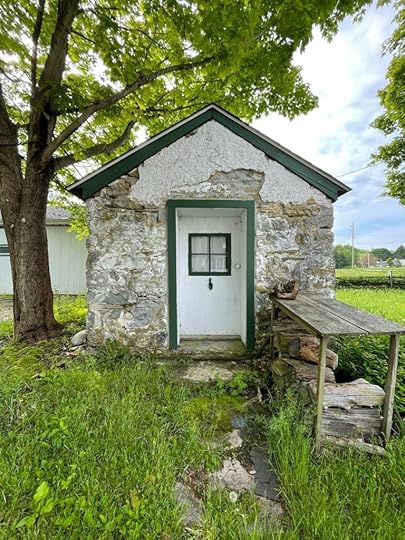
Which leads us to the perhaps the greatest problem we never managed to solve at PA: Nathan finding a way to care for the land, not just as a hobby but as part of his professional vocation as well. For a whole host of reasons (that would fill another blog post) – we could never find the way to make that transition. And as time went on, with Nathan tallying up more and more years in the IT industry, it became harder and harder to know how he would be able to make a professional turn here in Arkansas. But as our desire for him to make this transition to an agri-based profession grew, our lives were once again changing.
And so, we began to think about making a move. A move that would put us geographically closer to my work and many of my colleagues and friends who shared similar vocational calls. As someone who experiences the presence of God most significantly amid in-person vocational community, this is something that the core of my being is in desperate need of, especially as I transition out of full-time mothering. As we began to imagine what the next half (or more, God willing) of our life would look like, we began to wonder if there was situation out in the world that included more of a faith-based community vibe and would also allow Nathan to live into his long-held desire to earn his living from caring for the land itself. Maybe a seminary or a camp with a farm, something like a “farminary”? Maybe something all together different? We weren’t sure. But we had the sense that something was coming, if we just kept our eyes and hearts open.
It was at this intersection of wondering and our rapidly approaching “empty nest” that I found myself at Tricia Lyons and Lisa Kimball’s kitchen table, where they began to share the story of “this farm in New Jersey” and the family who was selling a large 18th-century farmhouse, with a dairy barn, pool, deep forest, multiple streams, pastures, a cabin, and more. There, at the table, they begin to share how they had started envisioning the land and farm as a place of radical hospitality, rest, retreat, and creative lifelong learning. How God was whispering visions to them and others of a teaching farm – a “Farminary” – where people could come and learn about creation care, sustainable farming, beekeeping, maple syrup extraction, mindful living, connections between liturgy and creation, etc. How they had been thinking for years of potential partnerships for on-site learning with seminaries, and other parishes or diocesan connections, as well as local schools and colleges looking to explore the spirituality of nature. And, of course, how they thought about evangelism: how can this land and its shelters be given back to God so to be salt, light, and leaven to their community and to the larger Church? Like all of us, how can this farm join the unfolding destiny of redemption for all creation?
So, I sat there and took it all in. Asking questions, hinting that Nathan might be willing to leave Arkansas (would he really?) and that we had begun to wonder about a move that would allow us to live deeper into this very idea (was that possible??)
The following day, I came to breakfast and brought a diagram I had recently drawn in my prayer journal.
A diagram with a heart (my heart) drawn in the center and flowing out from almost everything they had mentioned was my dream for what was next. Including the term “Farminary.” You should have seen Tricia’s face.
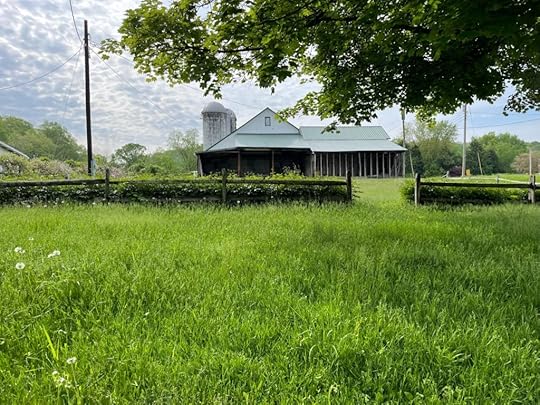
From that moment on, I felt that I had entered a fast-running Holy Spirit tributary, headed right into the big ole river of grace.
Soon, Nathan was in the stream with me, and then Miles and then Wylie. Before we knew it, there were visits to New Jersey, regular Zoom calls between Greers and the Lyons-Kimballs, shared folders with property maps, a working “Rule of Land,” and tax documents, and calls to lawyers and inspectors.
And there was prayer. So, so, so much prayer.
As I began to share what this might be with our closest folks, I kept saying, “We will keep walking through open doors. And if the doors close, then we know to stop.”
Well, y’all, the doors never closed.
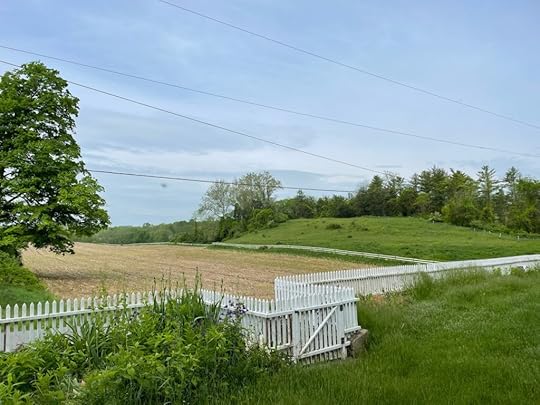
Seven months later, Lisa, Tricia, and all four Greers have come together to break bread and soil together. As a team we have all invested in this place and this call financially, vocationally, and prayerfully.
This means the Greers are moving to rural New Jersey. The same state I was born in 47 years ago, while my southern-born father was in the Air Force.
We will make our family home in the farmhouse – a family home that will be a central part of this dream of hospitality and gathering. Nathan will work and manage the land (so much!) and structures as his primary profession (though part-time school crossing guard is also on the table.) And I will, God willing, continue my work for the Presiding Bishop’s office. And we will of course do what we do with any place – proceed with intentionality and joy as we seek to create a space that is welcoming and nourishing for all. But while the six of us are the stewards, this holy adventure experiment is not just about us, or for us. This farm is a place for everyone.
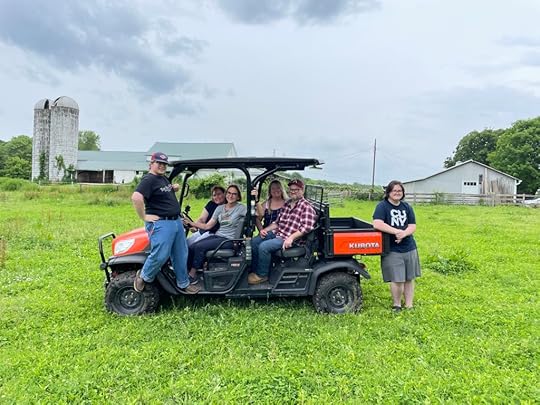
As Tricia says over and over “It’s God’s farm!” and all are welcome.
Our intention, for all of us – Lisa, Tricia, myself, Nathan, Wylie, and Miles- from the beginning – is that this farm would and always will be about community far beyond our two households. There are so many folks who are already part of the warp and weft of this place and what God is up to here that to call it “ours” would be wild hubris. I
So what comes next? That is a good question.
As you will hear all of us say over and over, there is still so much discernment to be done – so many ideas swirling around (this crew has never lacked for creativity,) but some of the things we have wondered are:
Will we find a way to host hikers off the Appalachian trail?
Will we be a place where seminarians can practice agri-ministry?
Will it be a place for rest and renewal for lay and clergy ministers experiencing burnt out?
Will it be an inspiring retreat space for ministry teams who want to dream together?
Will we have a free pumpkin patch that brings great joy?
Will Lisa have horses again?
Will we host youth campouts?
Will Jerusalem get to live out her Farmchurch dreams?
Yes! Maybe? We shall see?!
And that is the adventure!
There are so many possibilities, the community is vast, the workers are plenty, and the need is great. I know we all welcome your prayers as this story continues to be written!
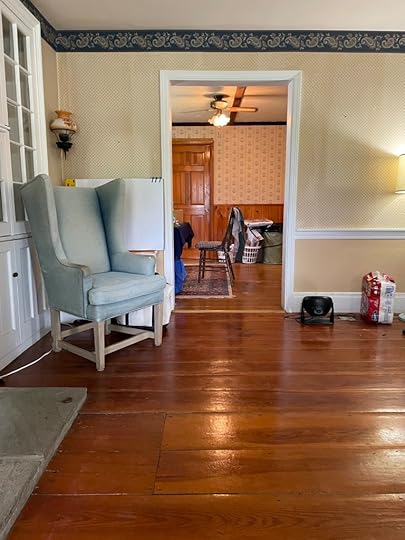
As far as our family’s next steps, we have begun the move in increments. Wylie has gone ahead of us to hold down the fort while we work to sell our house in Arkansas and settle things here (and prepare to move Miles to college in NYC in August!)
Lisa and Tricia also have their own space at the farm, which we are currently calling The Cottage, and they will spend as much time here this summer as they can.
And all of us will get to stripping wallpaper and learning the names of new kinds of trees and where the best coffee in town is, and before long, hopefully, you can come join in the fun too! In the meantime, feel free to pray for us – it’s the only way this will ever work.
Much love,
J
August 20, 2021
Praying the Offices
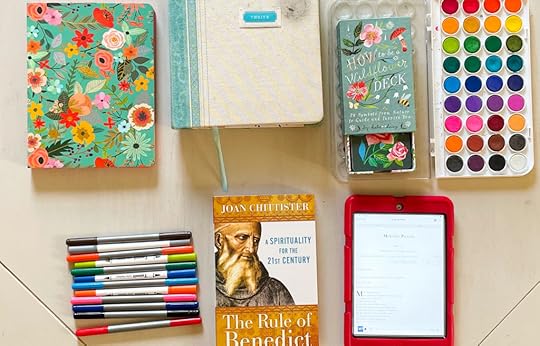
If you read my last blog post, you know that I recently began a new adventure as an Oblate-in-training with the sisters of the Community of St. Mary , a Benedictine order of nuns in The Episcopal Church. And if you are anything like I was just a few months ago, you might know very little about what is involved in discerning if the Oblate life is right for you.
Best I can tell, each order of monastics creates their own processes for joining their community as an Oblate or an Associate. Some are more rigorous than others, some take more time, some less. One of the reasons I was drawn to the Community of St. Mary’s was that it leans towards the more rigorous end of the spectrum. Their program is a two-year discernment, during which candidates (such as myself) engage in things like daily prayer, lectio divina, retreats at the Convent, virtual meetings with a cohort, and reading books and writing reflection papers. As someone who is both hungry for formation within community and deeply interested in spiritual practices, St. Mary’s process is (so far!) a great fit.
And.
It is completely challenging.
As an Enneagram 7w8, ENFP, Rebel, Strategic | Input | Activator | Maximizer | Ideation person, I find that creating daily habits is really hard to implement AND also totally freeing once I break the code to what works for me. It takes a lot of try, try, try, again.
And.
I am totally capable of figuring it out, if I remember that the goal isn’t to get it right the first time. Or even the 30th. The goal is to keep going.
So, now a few months in, I thought I would share a few of the practices I have found to help me in my practices of praying the Daily Offices (of which there are four a day) and engaging in daily Lectio Divina.
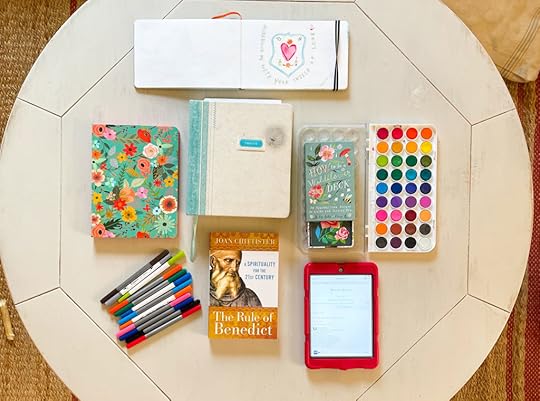
Practice: Lectio Divina
Goal: Practice Lectio Divina 6 mornings a week.
Average: 4 mornings a week
Tools: Journal, Journaling Bible, Markers, Paints, Sketch Book
Doing Lectio almost daily for several months, has confirmed that I am a solid mix of a verbal and a tactile processor. I need to write, draw, and talk outloud in order to get to a place where I can listen. I begin most mornings (because let’s be honest, it’s not every morning) with a strong cup of coffee, my bible, a journal, and some art supplies. Here is my process:
I begin my saying offering a simple prayer to God as I begin. It usually goes something like this: “may I hear/feel/intuit/receive/know what you have for me today. May I listen with the ear of my heart.” Next I read a portion of a Psalm, about 10 verses, (first year of oblate training is all about the Psalms), from my bible. Occasionally, if it seems as if my eyes are just gliding over the words, I will also listen to the passage using Bible Gateway Audio Player in a couple of different translations. I try to listen for the word or phrase that jumps out at me.After a few readings, I write freeform in my journal (totally worth the price because it lays flat!) about the word or phrase that stood out, allowing the images and thoughts that the words invoked to rise to the surface. Sometimes what I write is deeply personal, sometimes it is more about the world at large. Sometimes it takes up two pages, sometimes I only get two or three sentences. Once I am done, I reread what I have written, and then I write a prayer based on what emerged during my journalling.Finally, I sit in silence, offering the prayer and listening for any additional words or images that God might have. Often I use this time to draw or paint images or words that arose during my journalling.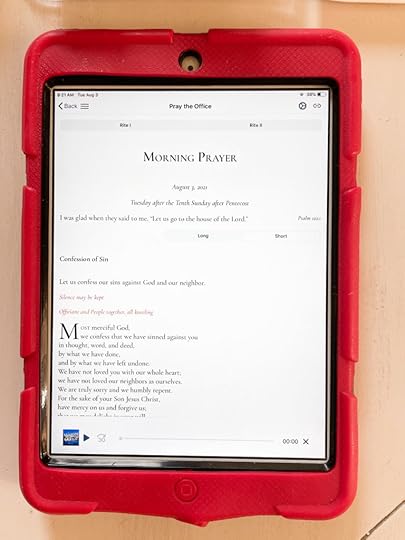
Practice: Daily Offices (Morning Prayer, Noonday Prayer, Evening Prayer, Compline)
Goal: All four offices, 6 days a week
Average: 3 a day, 5 days a week
Let it be known that I have NEVER been good at daily practices beyond eating and sleeping. Those I have no problem practicing with precise rhythm. And, I can now take a daily pill, if it is placed on my nightstand where I will see if before I go to bed. But anything else? Ha.
So as you can imagine, saying prayers four times a day, six days a week is a bit of a challenge. And it might always be a challenge to some degree. But, over the past few months I have discovered some hacks for making sure I practice and engage authentically and with relative regularity (all things considered.)
The Forward Movement App and audio prayers – this app, which I have on my phone and my tablet (as shown above) is the best. It totally saves my praying bacon. Built into the Pray the Office feature are recorded versions of Morning Prayer and Evening Prayer (which are the longest two.) Saying the prayers along with the host makes these practices so much more enjoyable and accessible. I can literally pray anywhere – in the pool, in the garden, in the car, while cooking dinner, on a plane etc. which works really well for me as no two days are ever really identical. This is the app I used the most often for daily prayer.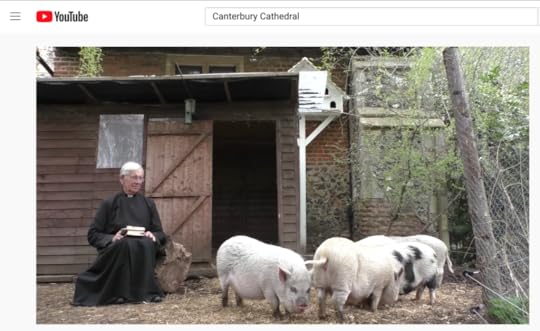
2. YouTube: However, I do need variety from time to time, so once or twice a week, you can find me saying Morning Prayer with Dean Roberts of Canterbury Cathedral, and all the critters of the deanery. This is a much longer option, as Dean Roberts likes to give a bit of a homily and a history lesson in the middle, but I enjoy the change of pace – it slows me down a bit- and the connection to the land this practice brings.

3. The Examen Journal : I had a bit of trouble with finding a good practice for Compline, one that would distinguish it enough from Evening Prayer (because sometimes I end up doing these offices just two hours apart) and make it a little bit more meaningful as as an end to the day. Which is why I was super excited to find this journal. There are four simple questions (which you can read here) and which help me process my day, and prepare for the next as well. I keep it on my nightstand, where I can easily reach it before lights out. I love this journal because it is not dated, and therefore I can just add the dates as I fill it in, and if I miss some, I don’t have huge blank shaming chunks in-between the filled in pages.
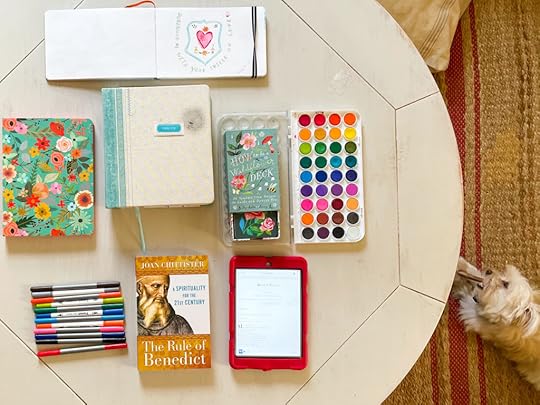
Practice: Reading The Rule of Benedict
There are a few more task on my daily Oblate activities, one of which is reading a portion of The Rule of Saint Benedict each day. Another Oblate-in-Training recommended this version to me, written by Joan Chittister, and I am so grateful. This version is organized by date, so that you read a bit of the rule each day, along with a short reflection/commentary by Chittister, which are all so lovely. She does a great job of making this ancient text accessible for the 21st century just as the title implies, and I find it to speaks to my modern life in surprisingly relevant ways.
So, there is a bit about how I am finding my way through praying the Daily Offices and practicing Lectio Divina regularly. While I sometimes get irritated that I have to stop what I am doing to shift gears and pray, I have begun to notice that on the days I don’t find a way to make the time, I feel less grounded, less filled-up. And right now, I need all the grounding I can get.
PS – While it is not part of my official Oblate practices, I also love to pull one of the Katie Daisy Wildflower cards each day for a little mindfulness inspiration.
July 15, 2021
Oblate in Training
The following is an essay I wrote for the Community of St. Mary Southern Provence Newsletter, in which I share a bit of the back story in how I have found myself in discernment to be an Oblate in their community.
“Ultimately it is the land and what it knows that sustains life; and it was to the land that we had to take our children before it was too late.” – Phyllis Tickle, from the prologue of her The Farm in Lucy series.
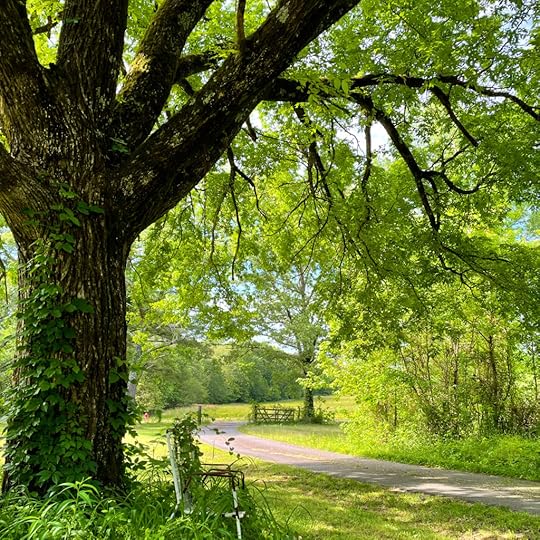
15 years ago this is the sentence that changed my life. The sentence that is still changing my life today. The sentence that eventually led me to the Community of St. Mary Southern Province.
This sentence appears in each of the prologues for The Farm in Lucy series by the late and great Phyllis Tickle, yet each and every time I read them, I would cry, a river of tears streaming down my face uncontrollably. And I had no idea why.
Years later, in a conversation with a friend about how she knew it was time to pursue her calling to be an Episcopal priest, she mentioned that the fact that she cried at every ordination service she attended was a bit of a tip-off that her time had come to follow suit. I have never cried in an ordination service (though I have sat and waited to see if I would) but the half a dozen or so times I would read Phyllis’ prologue (and I read these books seasonally) the waterworks were turned on and my heart felts as if it would come out of my body with longing. The only explanation that ever made sense of those tears is this: Those books, and in particular that prologue, awoke a desire in me that I never even knew I had. A light switch had been flipped in a previously undiscovered room of my heart, and a longing for something I didn’t understand, for a life for which I had no context, for a way of being in the world for which I had almost no vocabulary, began pulsing through my heart. A conversion had begun. We – my family and I – were being called to the land, not so we could escape the world, but instead so that we could be more fully engaged with the very terra firma that sustains us, putting our hands and hearts into the soil in order that we might not seek to change it, but to be changed by it. And so to the land we had to go. And more importantly, for this story – to the land I had to go.
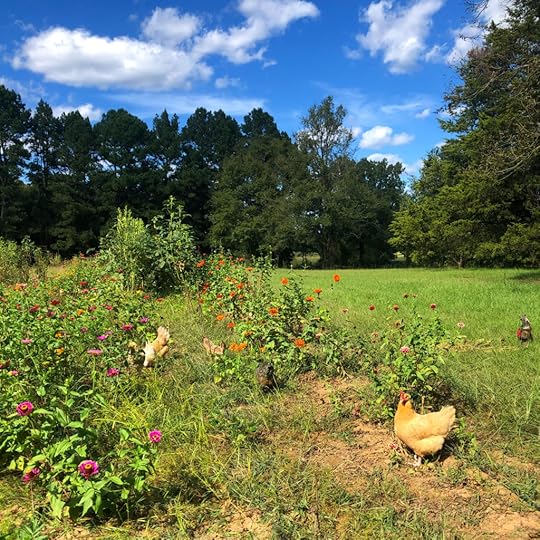
Of course, as is typical of callings, it took longer than we expected – a farm didn’t just manifest itself overnight. It would take a full decade for us to make our way from the city to the country, and in the interim, unsure if that call was real, I would write an entire book about our families experiment in living the Benedictine vows of Stability, Obedience, and Conversion of life through the lens of Jeremiah 29:4-14, right where we were, instead of where we longed to be.
And then, it all changed. A decade after my tears first landed on Phyllis’s words, we found ourselves with a mortgage for a house, an outbuilding, a pond and 8 acres in rural Arkansas, on a small farm we call Preservation Acres.
Over the past seven years we have learned a lot about each other, about God’s work in us and in the world, and about what it means to love our neighbors -animal, mineral, vegetable – as ourselves. We have made mistakes, and we have accomplished more than we probably realize. And we have shared our farm with others as we are able. But through it all one question has continued to nag me, in what I call a “Holy Spirit itch”. “How is the deep call that I know in my soul, that pulled me to this life, meant to be manifested in the world?” How is my call to ministry and my call to the farm connected, how are they to be woven and embodied together?”
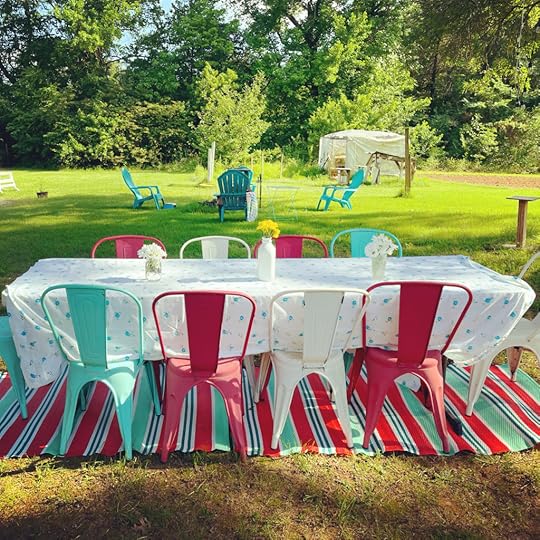
As this core question grew louder and louder, and the itch became more and more persistent, I began searching for the path that would provide the answers. Did I need to deepen my theological training? Undergird my career in ministry more formally somehow? Was the priesthood the way forward? The deaconate? Seminary? What about a master’s program in leadership, theology, Anglican studies? And if so, which one?
In an attempt to find my path, I was accepted into one divinity school, and completed a nine-month creation care certificate through another, but neither scratched the itch exactly.
And then, within a timespan of ten days towards the end of that certificate program, I was reminded of Benedict, and my connection to, and affection for, his Rule three separate times. And at each of these three occurrences, when of this part of myself I had left dormant for several years, was reflected back to me, my spirit leapt for joy. And I wondered, could this be the way forward? Could my Holy Spirit itch be a desire to deepen my vocation, not advance my career?
Years ago, when my children were little, I remembered reading a Kathleen Norris book in which she mentioned journey to become an Oblate. At the time, my stage of life was such that I could not conceive of adding one more thing to my life, but now… Well, now my children are young adults, my job is very different from the one I had in those early days, and it has space built in for continuing formation, and travel.
So, I began to research the Oblate opportunities. And I knew three things for certain: I desired to be a part of a community of sisters (no shade to the Brothers, but I live in a house of men and that is plenty,) I desired a monastic order within The Episcopal Church, and I desired a robust process. I had a hunger to learn, a thirst to be formed – I wanted to submit to a season of intentional discipleship. And underneath it all – but dared not hope – for a connection to the land.
With the same burst of energy as our arrival at the farm seven years ago, I suddenly found myself on the virtual front stoop of the Community of St. Mary’s Southern Province. A community whose geographical location was situated at one of those “thin places” in my life – on the domain at Sewanee. And there, on their front page was something called an Organic Prayer Program, which had something to do with prayer and planting. There, in the history, a connection to St. Mary’s Cathedral in Memphis – the very place I first met Phyllis Tickle, and would later attend her funeral. There, under the tab “Join” was a two-year oblation formation process, filled with books and reflection, prayer and community. And there was Benedict. Blessed Benedict, and his rule, being lived out on a farm. A farm with fruit trees and lavender fields, where the sisters made jams and jellies and other items from their bounty. Where people come to rest and restore, learn and pray, plant and harvest.
“The Oblates of the Community of St. Mary, Southern Province, make up an auxiliary body of the Community. Oblates live as lay extensions of the Community. Our Oblates serve the Community by broadening its ministry and representing it in places and ways that the Community desires. They live in the world, following an interpretation of the Benedictine Rule and the values it expresses that is consistent with their life situation.”
Reading those words on the website, my heart leapt again, and the tears fell.

Was it possible that I, and our farm, could be an extension of the Community? Could my work in lay ministry, and the work of Preservation Acres, both be a sort of satellite location of St. Mary’s Southern Province out in the world? Could my call to ministry and my call to the land find rest and new life in this expression? Could this be my vocation?
With shaky hands I sent Sr. Madeline Mary an email, indicating my interest in the Oblate program, praying that I would be accepted. And thankfully, gratefully, I am happy to report that I was, and I have begun the process (rather clumsily at times, but isn’t that how any practice begins- badly?) of discerning my call to be an Oblate of CSM.
This story is both 15 years, and 15 months in the making. It is a beginning, and a middle, and maybe even an ending (maybe that itch?) It is a story about calling, and hopefully also about listening, and I also think it is a story about wholeness. But that is for another essay.
My hope is to share a bit of this Oblate journey here on this old dusty blog, to share a bit of my experience and what I am learning, both as a record for myself, but also as witness to this vocation, this way of living intentionally in the world.

December 12, 2020
Last Minute Saint Lucia Day Celebrations
December 13 is the Feast of Saint Lucia aka St. Lucy Day. There are a couple of different stories around why and how Lucia came to be a saint, but one thing seems to hold true even if the facts are fuzzy, and it is this: LOVE made her brave, LOVE made her fierce. Her gifts, her light, her actions, her choices – they came from love. And this love – this is the light that breaks the darkness. This is the love that brings hope.
What came into existence was Life,
John 1: 4-5
and the Life was Light to live by.
The Life-Light blazed out of the darkness;
the darkness couldn’t put it out.
In addition to loving the essences of this day (which goes so perfectly with John 1:1-18 perhaps my favorite Gospel passage) I also love the traditions – they are some of my very favorites of the entire Advent season – the baking, the candles, the wreathes, the idea of breakfast in bed on a cold winters morning.. (who doesn’t love breakfast in bed??) This year, because of quarantide I have been home long enough to prepare and celebrate a bit more than years past, and I thought I would share a few resource in case you too want to throw together some last-minute celebrations and celebrate the light winning.
IDEA #1 – Crown Craft and Storytime
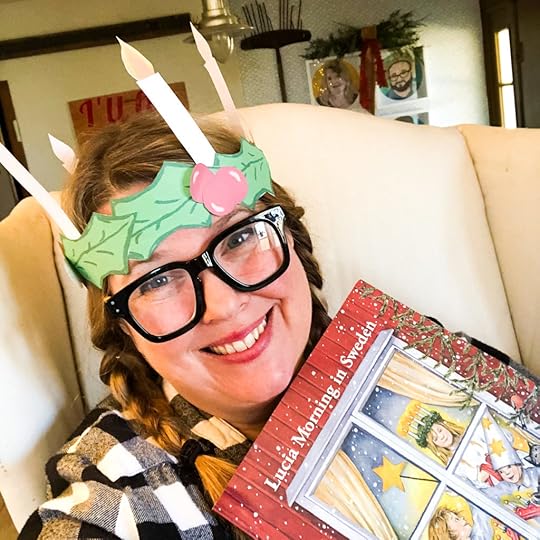 Jerusalem wearing a paper St. Lucia crown
Jerusalem wearing a paper St. Lucia crownI found this easy-to-make crown craft online, and made myself one (I printed extra lingonberry leaves for my big head) to wear while I read the children’s book Lucia Morning in Sweden for one of our local children libraries (video below!) Please pardon my Southern pronunciations of the Swedish words 
December 3, 2020
The Thrill of Hope…
Next week, I will be joining my good friend Callie Swanlund to host a special day for lay women leaders in ministry. This day is for lay (non-ordained) women who lead in ministry – voluntarily or professionally- to find some quiet in the midst of the chaos and some community during this season of isolation.
This day has been set aside as a day of hope in what feels like an overwhelming and never-ending time. In a season typically associated with joy and expectation, we know that lay leaders are working tirelessly and may not set aside time to experience those things for themselves. This year has felt weary in so many ways, so let’s draw on God’s promise of love incarnate, and the strength of women like Mary and Lucia. During this Advent Quiet Day, we will pray and worship together, hear good news in community, and make space for the joys and sorrows of the past year while letting our hearts be nourished for the year ahead.
Here you can see Callie and I chatting a bit about what a “Quiet Day” is (and what it isn’t) and get a feel for the table we are setting for the day.
[image error](Feel free to save this image)
When so many of us feel as if we are doing both too much and not enough we hope that this day will serve as a reminder that you are enough, that your gifts and your joy are enough, and that you are – above all else – a beloved child of God.
[image error]PS- There will be some encouraging digital swag including some coloring pages.
If you have any questions about the day, the cost, or other concerns please feel free to reach out to me or Callie. We are so looking forward to coming together in hope and love and most of all – rest.
November 8, 2020
A Prayer for Being Present
As we enter into the holiday season in a year that will require us to do a lot of things differently, here is a little prayer to help us be present to what is, instead of what we wish could be.
Help me be here.
Help me notice if I need to disconnect – from devices or from unhealthy habits, or the Amazon shopping cart.
May I open my hands to what is instead of just waiting for what might be.
..life change comes when we receive life with thanks and ask for nothing to change.” – Ann Voskamp This includes changing plans, smaller holiday gatherings and busted expectations.
Thank you for the signs of life around me. Especially the messy ones.
Help me to not judge myself by the messes in my home or the hurdles I face to love my neighbors (or extended family) well. May I see them like tears, as a sign that I am alive. May I also remember that most messes, like tears, do not last forever.
Help me know when to let go and when to hold tight.
May I remember that you have called me to have a spirit of hope and love, not fear and control. May I choose the things the matter the most more often than not. And may I let go of the battle to control. Including how the Christmas tree gets decorated. Or if we have a tree at all.
Forgive me for trying to do it all alone. May I accept help even when it is imperfect.
You created me to be in community – with you and with others. May I be brave in asking for help, and may I accept it however it arrives.
Help me trust that I am loved, just as I am.
There is nothing I have to do to earn your love, and there is nothing I can do lose your love. You just love me – as I am. Help me learn to live into that love with every breathe as we wait to celebrate the night the world changed forever.
Thank you that you are you, and that you are good.
May I open my knowing and my heart to your goodness all around me -in nature, in my home, in my imagination, in the world. In the twinkle lights and in one more cup of hot chocolate. May I soak it up and pass it on.
Amen.
[image error] Want more prayers and stories of being present to what is? Check out a whole book of them – currently on sale!



